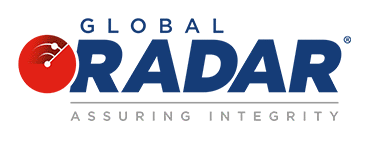The art and antiquities market has long been characterized by privacy and discretion, aside from its association with political and financial influence and power. With reach felt across the globe, wealthy elites frequently exchange items worth millions upon millions of dollars through private auctions and personal handshake deals, with the origins of said funds often derived from illicit activity. Given the clandestine nature of the market as a whole and many of those behind these art dealings themselves seeking to keep their transactions out of the public eye, purchases and sales are extremely difficult for international law enforcement agencies to keep tabs on. Given the growing presence of global regulatory enforcement of illicit financial activity, as well as higher international standards and requirements for anti-money laundering (AML) and counter-terrorism financing (CFT) programs seen in both the public and private sectors, art and antiquities market has evolved into a particularly attractive vehicle by which financial and organized criminals, as well as corrupt politicians, have sought to launder significant amounts of ill-gotten cash.
With many of the pieces traded in both public and private spaces considered “priceless” and lacking finite price tags (in addition to the fact that many of these transactions take place off-the-record), it is difficult to place an exact dollar figure on the true value of the collective antiquities trade because Even so, it is estimated that the global art market is valued at upwards of $60 billion collectively. To provide perspective, the United States market accounts for nearly 50% of this total at approximately $29 billion as of 2019.
Making matters more complicated for authorities attempting to combat illicit financial activity within and outside of American borders is the fact that various loopholes currently exist AML legislation, that simply do not apply to other industries through which large amounts of money are moved. For example, many criminals continue to utilize “free ports” systematically placed in countries around the world where normal tax and customs rules do not apply. While free ports (generally highly secure airline and maritime ports) were originally intended as spaces to store merchandise in transit, they have become ever-popular for storing various valuable assets including art, antiques, gold, and precious stones on a more permanent basis. When it comes to the process of buying and selling, buyers will often make their purchases remotely (again decreasing their risk of alerting international authorities) and have the work(s) of art sent for storage at a free port. Once the work is settled in one of these ports, the individual(s) in question can then sell them anonymously with a rather fast turnaround rate given the high demand for valuable pieces of this variety, or simply hold onto the work(s) for extended periods of time to allow them to appreciate in value while keeping their risk of detection limited.
Given the lack of potent regulation surrounding this trade, criminals and other notable persons are essentially allowed to make cross-border transactions and transfer funds of unknown origin through the sale of real and/or fraudulent antiquities with virtually no controls surrounding these practices – truly a troubling formula. With criminals seeking to exploit any and all regulatory loopholes involved in this lucrative trade, financial experts and lawmakers have become increasingly aware of the need for solutions to limit the misuse of art and antiquities to launder cash, with particular attention being placed on domestic and global efforts to thwart financing activities of terrorist organizations. In recent years, the U.S. Department of Justice (DOJ) has cracked down on multiple cases alleged antiquities smuggling that included instances of alleged cultural property theft on behalf of the Islamic State.5 However, hope appears to be on the horizon in this regard.
To combat both established and emerging issues on this front, a new provision was placed within the much-heralded United States National Defense Authorization Act (NDAA) approved on January 1st. The bill, H.R. 6395, effectively removes the previous exemption that art and antiquities dealers had from AML/CFT laws under the U.S. Bank Secrecy Act (BSA). More specifically, the NDAA adds those “engaged in the trade” of ancient art and artifacts to the BSA’s list of high risk professions and industries, which must assist the U.S. government in preventing and detecting financial crimes.1 The Wall Street Journal reports that new measure will now call upon the U.S. Treasury secretary to work together with the Federal Bureau of Investigation (FBI), the Justice Department, and Homeland Security to “define the scope of the impending anti-money-laundering rules on the antiquities market” which includes explicitly detailing who should be subject to the requirements, decide on whether or not the rule would focus on high-value trade in antiquities, and whether purchasers of high-value antiquities would need to be identified (similar to new requirements issued for beneficial ownership identification under the Defense Act.7 These respective bodies will also be tasked with identifying potential exemptions to the agreed upon rules. Altogether, the law is seeking to place art and antiquities on the same pedestal of other high-valued goods (such as precious metals and stones) with respect to anti-money laundering reporting requirements. The U.S. Treasury Department was also been tasked with conducting a study on money laundering and terror financing via art/antiquities to be completed before January 2022. The collective actions of Congress earlier this month have been well received on a number of levels. John Byrne, co-chair of the Task Force and former chairman of the Association of Certified Anti-Money Laundering Specialists (ACAMS), the largest AML organization in the world, noted that the aforementioned actions will help “ensure that criminals and terrorists will no longer have an easy path to utilize cultural artifacts to support future horrific acts.”1
Today, money laundering comes in a number of forms and various scales. For a comprehensive understanding of the various elements of these destabilizing financial crimes, download Global RADAR’s free e-Book: The Art of Money Laundering.
Weekly Roundup
Capital One To Pay $390M Over BSA Violations
On January 15th, the Financial Crimes Enforcement Network (FinCEN) – a bureau of the U.S. Treasury Department that combats illicit finance and promotes national security via the strategic use of financial intelligence – announced a landmark fine against Capital One, National Association for multiple violations of the Bank Secrecy Act (BSA). Capital One was hit with a $390,000,000 civil money penalty for its negligent violations of the BSA that involved deliberately failing to implement and maintain an effective AML program to protect itself, as well as its customers and counterparts, from money laundering activity, while also failing to report thousands of suspicious currency transactions.4 The transactions in question reportedly occurred between 2008 and 2014, leading to millions of dollars worth of suspicious transactions going unchecked. FinCEN reports that a significant portion of the proceeds of these transactions have been connected to “organized crime, tax evasion, fraud and other financial crimes laundered through the bank into the U.S. financial system.”2
Also factored in to the fine was the fact that Capital One failed to file suspicious activity reports (SAR’s) involving the activity of specific customers, this despite having physical evidence of outstanding criminal charges against them. One such customer, Domenick Pucillo, was a convicted money launderer facing criminal charges in multiple jurisdictions, and operating on behalf of the notorious Genovese crime family. A FinCEN press release on the penalty details how Capital One failed to “timely file SARs on suspicious activity by Pucillo’s check cashing businesses, and continued to process over 20,000 transactions valued at approximately $160 million, including cash withdrawals, for Pucillo’s businesses.”2 Capital One has undertaken significant remediation efforts since the bureau launched its initial investigation into the group’s improprieties, specifically with regards to its SAR and CTR filing systems.
Samsung VP Sentenced to Prison for Bribery, Embezzlement
Last week, the Vice Chair of multinational tech conglomerate Samsung was officially sentenced to prison by the Seoul High Court on multiple charges. The sentencing comes in wake of a major influence-peddling scandal that engulfed much of South Korea and ultimately led to the impeachment of the country’s first female president Park Geun-hye. Lee Jae-yong was found to have actively provided bribes and implicitly asked President Park to use her power to help his smooth succession at Samsung6 – this according to the court upon reaching its final verdict. While the former president was ultimately sentenced to 25 years imprisonment for her crimes, Lee faces a 2.5 year sentence after being found guilty of bribery, embezzlement, and concealment of criminal proceeds worth upwards of 8.6 billion Korean won ($7.8 million USD).
Lee also faced sentencing on similar charges in 2017 after it was discovered that he offered million-dollar bribes to Park and a close ally of the ex-leader. Lee’s initial conviction was reduced following an appeal, with the executive released from prison after serving only one year of a five-year sentence. With that being said, the 12 months already served by Lee will reportedly count towards his new sentence – leaving him with only 1.5 years left to serve.
Ex-British Oil Exec Pleads Guilty to Bribery
In connection with the UK Serious Fraud Office (SFO) investigation into international energy service provider Petrofac, the company’s former head of global sales David Lufkin pleaded guilty to three counts of bribery in a British court last week. The charges against Lufkin come in relation to his offering and subsequent completion of illicit payments to foreign agents in the United Arab Emirates as part of an effort to influence the awarding of lucrative engineering, procurement and construction contracts to the firm in 2013 and 2014. The cumulative value of these illicit payments, which were made periodically between 2012 and 2018, are said to be worth $30 million in exchange for the contracts that were valued at upwards of $3.3 billion.
The latest charges against Lufkin come in addition to 11 other bribery-related charges brought forth by the SFO against the embattled executive in February of 2019. The SFO notes that the previous charges were “related to corrupt offers to influence the award of contracts to Petrofac in Iraq worth in excess of $730 million and in Saudi Arabia worth in excess of $3.5 billion.”3 As of today, no charges have been brought against Petrofac as a company or against any of its current executives and employees.
Citations
- “Congress Applies Anti-Money Laundering Laws to Antiquities Dealers.”Antiquities Coalition, 13 Jan. 2021.
- “FinCEN Announces $390,000,000 Enforcement Action Against Capital One, National Association for Violations of the Bank Secrecy Act.”Financial Crimes Enforcement Network , U.S. Department of the Treasury, 15 Jan. 2021.
- “Former Senior Petrofac Executive Pleads Guilty to Bribery Offences.”UK Serious Fraud Office, 14 Jan. 2021.
- Plaks, Daniel. “Capital One Fined $390M For Violating Bank Secrecy Act.”Nasdaq, 17 Jan. 2021.
- Ray, Kevin P., and Kyle R. Freeny. “Implications for Art Dealers in Anti-Money Laundering Provisions of the National Defense Authorization Act of 2021.” Lexology, 7 Jan. 2021.
- “Samsung’s Lee Sentenced to 30 Months in Prison in Corruption Retrial: DW: 18.01.2021.” COM, Deustche Welle, 18 Jan. 2021.
- Sun, Mengqi. “Defense Act Extends Anti-Money-Laundering Requirements to Antiquities Market.” The Wall Street Journal, Dow Jones & Company, 22 Jan. 2021.

